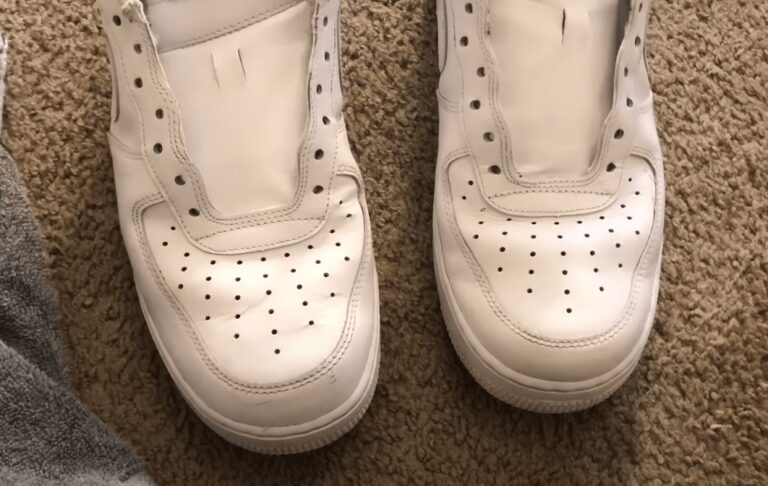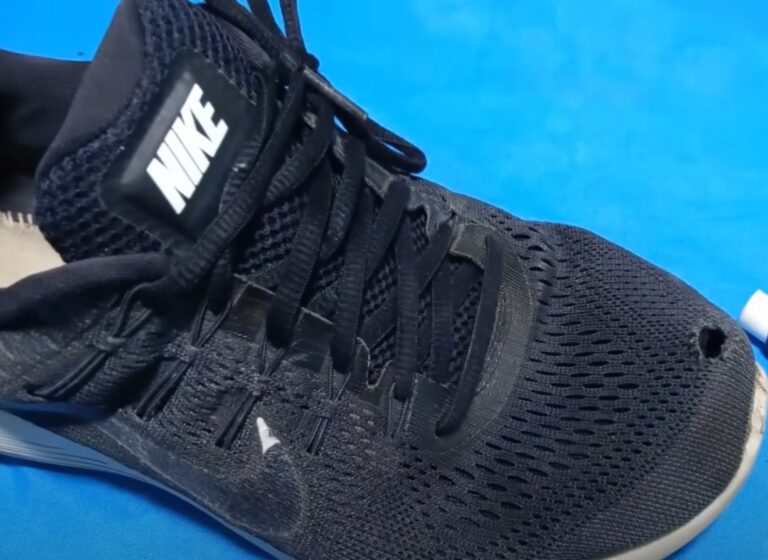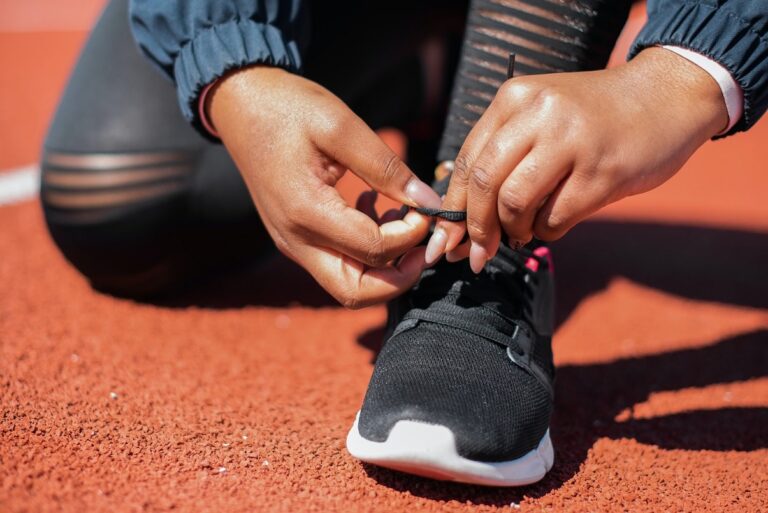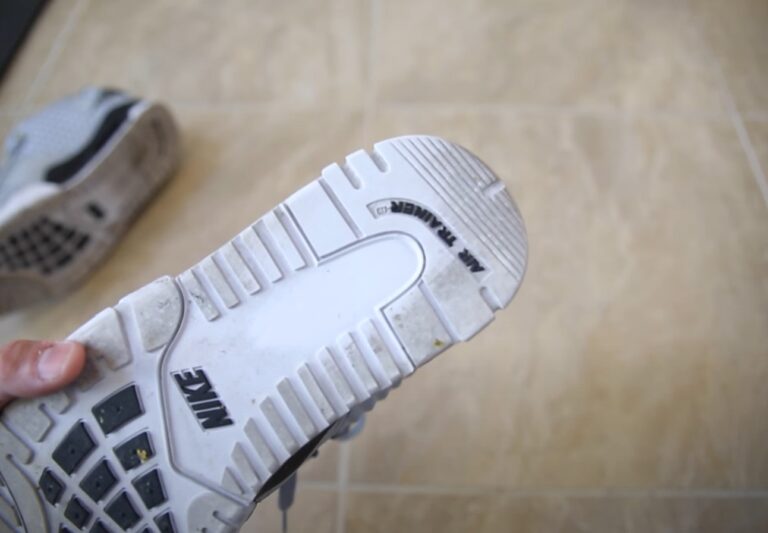ARE TRAIL RUNNING SHOES GOOD FOR HIKING? {Doubt Clearing Guide}
Are trail running shoes good for hiking? This is a question that outdoor enthusiasts often ponder when gearing up for a hike. While some argue that trail running shoes are suitable for hiking, others believe that they are not. To help you understand whether or not trail running shoes are good for hiking, we have delved deeper into this topic and consulted with outdoor experts. So, let’s take a closer look.
In short, trail running shoes can be a good option for hiking, depending on the type of terrain you’ll be tackling. These shoes are designed to handle rugged trails, provide excellent traction, and offer support to your feet. However, if you’re planning to go on a multi-day trek or carrying a heavy backpack, it’s recommended to opt for hiking boots that offer more ankle support and protection.
If you’re still unsure about whether or not to wear t rail running shoes on your next hike, we’ve got you covered. In this article, we’ll provide you with all the information you need to make an informed decision. From the differences between hiking boots and trail running shoes to the benefits and drawbacks of each, we’ll cover it all. So, without further ado, let’s dive into the world of trail running shoes and hiking and discover which option is best suited for your next adventure.
What Are Trail Running Shoes?
Trail running shoes are a type of specialized footwear designed for running on off-road terrain such as hills, mountains, and trails. They are built to provide better traction, support, and protection against the unpredictable terrain found on these routes.
Trail running shoes typically have more durable and rugged outsoles that provide better traction on rocky, slippery, and muddy surfaces. They also feature thicker midsoles that offer better cushioning and shock absorption, which is essential for reducing the impact of uneven terrain on your feet and joints.
Additionally, trail running shoes have sturdier uppers made of breathable and water-resistant materials that provide better protection against rocks, roots, and other obstacles you may encounter while running on trails.
Purpose of trail running shoes
Trail running shoes are designed to provide runners with the necessary support, cushioning, and grip needed to navigate challenging off-road terrain. They are made to be lightweight, durable, and breathable, allowing runners to move quickly and comfortably through the trail.
Types of trail running shoes
There are different types of trail running shoes available, each designed to meet specific needs. These include light trail shoes, which are perfect for easy trails and short distances, and rugged trail shoes, which provide more support and cushioning for longer and more challenging terrain.
Features of trail running shoes
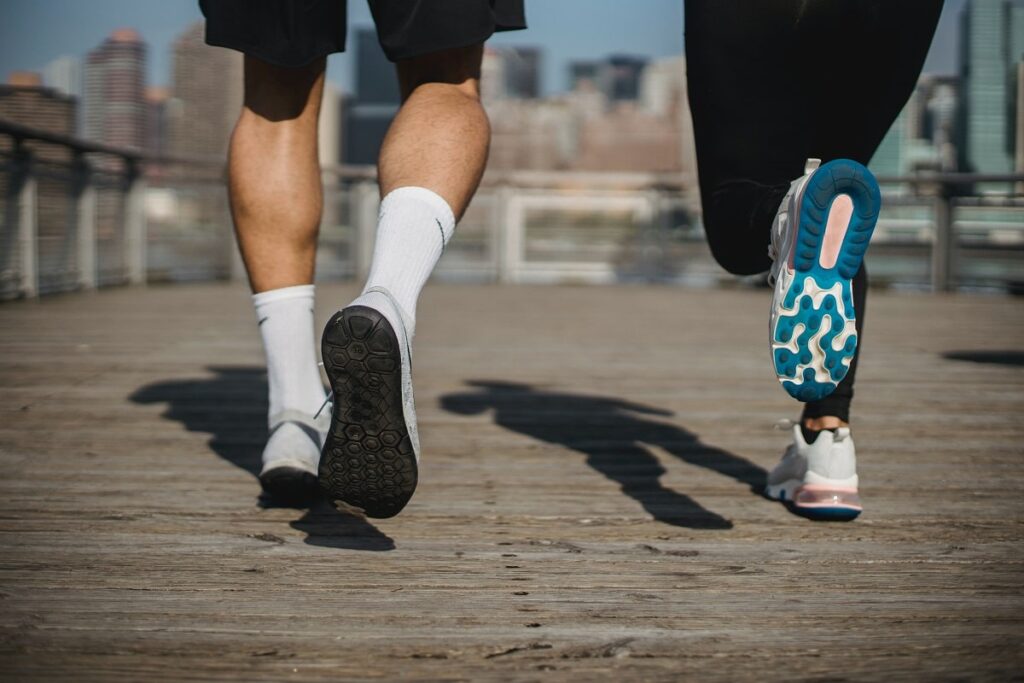
Trail running shoes are specifically designed to handle the unique demands of running on rugged terrain. Some key features of trail running shoes include enhanced grip and traction, durable outsoles with aggressive treads to provide stability and support on uneven surfaces, and protective features like toe caps and rock plates to shield the feet from sharp rocks and other obstacles. These shoes also often have water-resistant or waterproof materials to keep feet dry in wet conditions, and breathable uppers to prevent overheating during intense workouts. Additionally, many trail running shoes have reinforced heels and ankle collars for added support and stability on technical trails. Below Are Some ither Features of Trail Running that Consider:
Lightweight
One of the key features of trail running shoes is their lightweight design. This allows runners to move quickly and efficiently through the trail, without feeling weighed down by heavy shoes.
Durable
Trail running shoes are also designed to be durable, with tough materials that can withstand the rough terrain of the trail. This ensures that the shoes can last for multiple hikes and adventures, making them a great investment for avid hikers and runners.
Breathable
The breathable design of trail running shoes is also a key feature, as it allows air to circulate through the shoe and prevent overheating and sweating. This helps to keep feet cool, dry, and comfortable, even during long hikes or runs.
Traction
Another important feature of trail running shoes is their traction. The sole of the shoe is designed to provide grip and stability on different types of terrain, including mud, rocks, and loose gravel. This helps runners to maintain their footing and avoid slips and falls.
Support
Trail running shoes also provide support to the feet and ankles, with reinforced materials and cushioning to absorb impact and prevent injury. This is particularly important when hiking on uneven or rocky terrain.
Differences Between Trail Runners & Hiking Boots
What are Trail Runners?
Trail runners are a type of shoe designed specifically for trail running. They are lightweight, flexible, and have a low profile to allow for a greater range of motion. Trail runners typically have a more minimalist design, with less cushioning and support than traditional running shoes.
What are Hiking Boots?
Hiking boots are a type of shoe designed specifically for hiking. They are typically made with sturdy materials like leather or synthetic fabrics to provide support and protection. Hiking boots also have a thick, rugged sole that provides traction on uneven terrain. They often have extra features like ankle support and waterproofing to make them suitable for a variety of conditions.
Differences between Trail Runners and Hiking Boots
While trail runners and hiking boots may seem similar at first glance, there are actually many differences between the two. Here are some of the key differences to keep in mind:
Design: Trail runners are designed for running, while hiking boots are designed for hiking. This means that trail runners are typically lighter and more flexible, while hiking boots are heavier and more sturdy.
Cushioning: Trail runners typically have less cushioning than hiking boots, which can make them feel more minimal and responsive. Hiking boots, on the other hand, have more cushioning to provide shock absorption and support on long hikes.
Traction: Hiking boots have a thicker, more rugged sole than trail runners, which provides better traction on uneven terrain. Trail runners, on the other hand, have a thinner sole with smaller lugs that are designed for speed and agility.
Ankle Support: Hiking boots often have extra ankle support to prevent injuries on steep or rocky terrain. Trail runners, on the other hand, typically have a lower cut that allows for greater range of motion.
Waterproofing: Many hiking boots are waterproof or water-resistant, which makes them ideal for hiking in wet conditions. Trail runners, on the other hand, are typically not waterproof, which can make them less suitable for wet conditions.
Can you hike in running shoes?
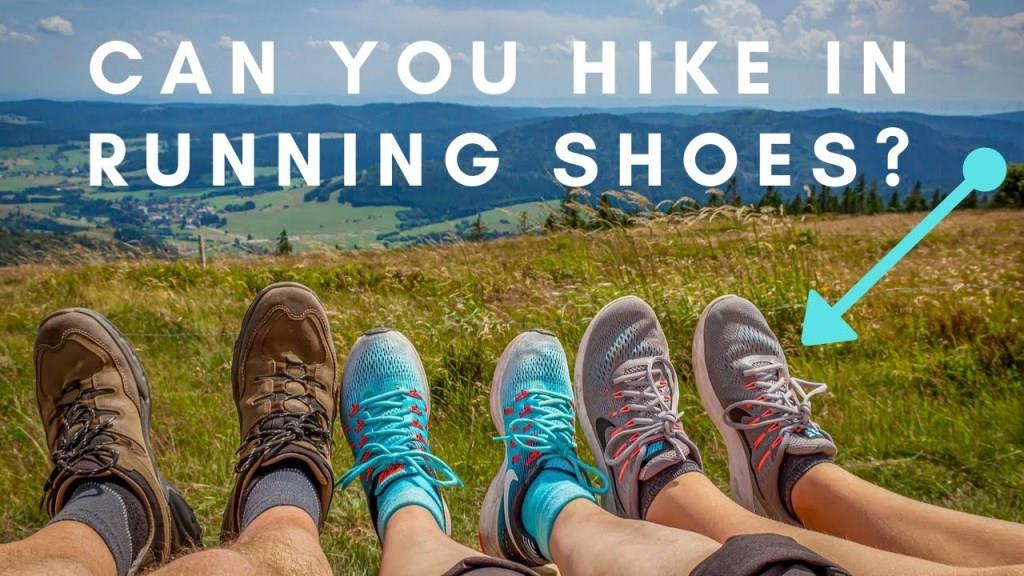
Hiking is a popular outdoor activity that can be enjoyed by people of all ages. When gearing up for a hike, it is important to choose the right footwear that will keep your feet comfortable and well supported throughout the journey. Can you get away with wearing running shoes on your next hike?
Experts agree that although running shoes may be comfortable and lightweight, they are not designed to provide the same level of support as hiking boots or trail shoes. Hiking requires more stability than walking or running on flat surfaces, so you need a shoe with extra cushioning and better protection against uneven terrain. Running shoes typically have thinner soles and less ankle support than dedicated hiking boots, which can put added strain on your ankles while navigating steeper trails.
Factors to Consider When Choosing Between Trail Runners and Hiking Boots
Now that you know the main differences between trail runners and hiking boots, it’s important to consider a few factors when deciding which option is best for you: choice.
Type of hiking terrain
The type of terrain you’ll be hiking on is an important factor to consider when choosing trail running shoes for hiking. If you’ll be hiking on rough or rocky terrain, you’ll need shoes with a strong, durable sole and good traction. If you’ll be hiking on more even terrain, you can opt for a shoe with less aggressive tread.
Shoe fit
Getting the right fit is crucial when it comes to trail running shoes for hiking. Your shoes should fit snugly but not be too tight. Your toes should have some wiggle room, and you should be able to move your feet around without any discomfort.
Distance:
Consider how far you’ll be hiking or running. If you’re planning on doing a long-distance hike or run, you may want the extra cushioning and support of hiking boots. If you’re doing
Durability
Durability is key when it comes to trail running shoes for hiking. You’ll want shoes that can handle the wear and tear of rough terrain and long hikes. Look for shoes with a strong, durable sole and a well-constructed upper.
Traction
Good traction is essential when hiking on uneven terrain. Look for shoes with a tread pattern that provides good grip on both wet and dry surfaces.
Cushioning
Cushioning is important for comfort during long hikes. However, too much cushioning can make shoes heavy and cumbersome. Look for a shoe with enough cushioning to keep you comfortable without weighing you down.
Pros of Using Trail Running Shoes for Hiking
There are several advantages to using trail running shoes for hiking. Here are some of the main benefits:
- Lightweight: Trail running shoes are typically lighter than hiking boots, which can help reduce fatigue and make it easier to move quickly over rough terrain.
- Increased flexibility: Trail running shoes often have a more flexible sole than hiking boots, which can be an advantage on uneven terrain.
- Good traction: Trail running shoes are designed with extra grip and traction to handle rocky and slippery terrain, which can make them a good choice for hiking on challenging trails.
- Quick-drying: Trail running shoes are often made with breathable materials that help them dry quickly, which can be helpful if you encounter water or wet conditions on your hike.
Cons of Using Trail Running Shoes for Hiking
While trail running shoes have several advantages, there are also some drawbacks to using them for hiking. Here are some of the main disadvantages:
- Less ankle support: Trail running shoes typically provide less ankle support than hiking boots, which can increase the risk of injury on rough terrain.
- Less protection: Trail running shoes often have thinner soles and less padding than hiking boots, which can make them less comfortable on rocky or uneven terrain.
- Durability: Trail running shoes are designed for running, which means they may not be as durable as hiking boots, especially if you plan on using them for extended periods of time.
The Challenges of Hiking in Trail Running Shoes

While trail running shoes can offer many advantages for hiking, they are not without their drawbacks. One of the main challenges is that trail running shoes may not provide enough ankle support for long and steep hikes. Unlike hiking boots, which have a high-cut design that can stabilize your ankle and prevent sprains, trail running shoes typically have a low-cut or mid-cut design that can expose your ankle to twists and turns. If you have a history of ankle injuries or weakness, you may want to consider wearing hiking boots instead of trail running shoes.
Another potential issue with trail running shoes is that they may not be as durable and waterproof as hiking boots. Hiking boots are usually made of sturdy leather or synthetic materials that can resist abrasion, puncture, and moisture, while trail running shoes may have more mesh and synthetic materials that can wear out or tear faster. If you plan to hike in rocky or wet conditions, you may want to opt for hiking boots that can provide better protection and longevity.
Are hiking boots necessary?
As the spring season quickly approaches, hikers and outdoor enthusiasts alike are gearing up for their next adventure. A common question that arises when preparing for a hike is, “are hiking boots really necessary?” Hiking boots provide many benefits on the trail that can be overlooked.
The primary benefit of wearing hiking boots is increased ankle support which helps reduce the likelihood of an ankle injury. The thicker sole and higher ankle collar also provides greater protection from sharp rocks, sticks, and other debris found on trails. In addition to improved traction in slippery conditions, hiking boots have better breathability than most other footwear options which reduces sweat buildup and keeps feet cool during long hikes.
Conclusion:
trail running shoes can be a good option for hiking, especially if you’ll be hiking on even terrain for shorter distances. However, if you’ll be hiking on rough terrain or for longer distances, hiking boots may be a better choice. When choosing trail running shoes for hiking, consider factors such as terrain, fit, durability, traction, and cushioning. With the right shoes, you can enjoy a comfortable and enjoyable hiking experience.
FAQs:
Can I wear trail running shoes for long hikes?
A: Yes, you can wear trail running shoes for long hikes, provided they offer sufficient support, cushioning, and traction.
Can I wear trail running shoes for backpacking?
A: It depends on the type of backpacking you plan to undertake. If the backpacking is not too challenging and the trail conditions are favorable, then trail running shoes can be an option.
Are trail running shoes good for rocky terrain?
A: Trail running shoes may not provide sufficient ankle support for rocky terrains, making them unsuitable for such conditions.
Can I use trail running shoes for hiking in wet conditions?
A: Trail running shoes have limited waterproofing, which makes them unsuitable for hiking in wet
Are trail running shoes good for hiking in wet conditions? A: Trail running shoes can be designed to be water-resistant or quick-drying, but they may not provide as much protection as hiking boots in extremely wet conditions.



